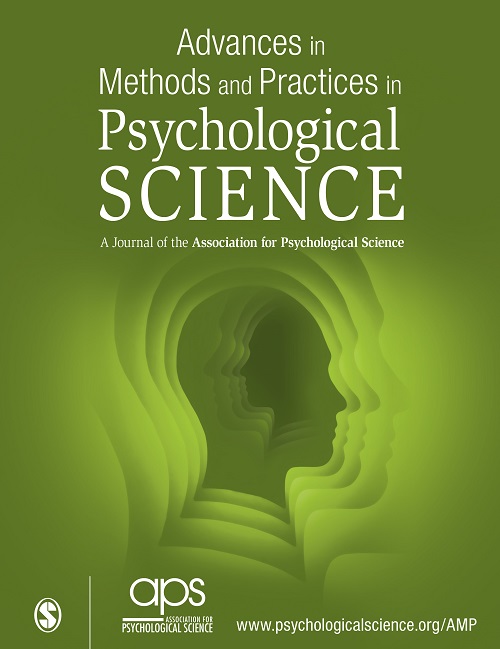Tversky和Kahneman(1992)累积前景理论文章中的四个内在矛盾:以模糊理论范围和模糊简约为例
IF 15.6
1区 心理学
Q1 PSYCHOLOGY
Advances in Methods and Practices in Psychological Science
Pub Date : 2022-01-01
DOI:10.1177/25152459221074653
引用次数: 1
摘要
学者们严重依赖理论范围作为挑战现有理论的工具。我们主张,如果在任何新理论提出之初,就投入更多的努力,公开地说明和煞费苦心地描绘其预期的范围,那么科学发现可能会加速。作为一个案例研究,我们考虑了Tversky和Kahneman(1992)。他们的累积前景理论获得了诺贝尔奖,他们在两项研究中都有证据表明,大约一半的参与者违反了独立性,这是预期效用理论(EUT)所要求的属性。然而,即使在开始的时候,新的理论也可能显示出它们自己有限的范围的迹象。例如,我们表明,Tversky和Kahneman在他们自己的损失厌恶测试中的发现提供了证据,证明至少有一半的参与者在该研究中违反了他们的理论。我们强调了原始文章中相互矛盾的发现,这使得评估累积前景理论的范围和作者自己的证据的简约性变得模棱两可。Tversky和Kahneman的文章说明了一种社会和行为研究文化,在这种文化中,理论范围扮演着极其不对称的角色:对现有理论提出质疑,并激发替代建议。本文章由计算机程序翻译,如有差异,请以英文原文为准。
Four Internal Inconsistencies in Tversky and Kahneman’s (1992) Cumulative Prospect Theory Article: A Case Study in Ambiguous Theoretical Scope and Ambiguous Parsimony
Scholars heavily rely on theoretical scope as a tool to challenge existing theory. We advocate that scientific discovery could be accelerated if far more effort were invested into also overtly specifying and painstakingly delineating the intended purview of any proposed new theory at the time of its inception. As a case study, we consider Tversky and Kahneman (1992). They motivated their Nobel-Prize-winning cumulative prospect theory with evidence that in each of two studies, roughly half of the participants violated independence, a property required by expected utility theory (EUT). Yet even at the time of inception, new theories may reveal signs of their own limited scope. For example, we show that Tversky and Kahneman’s findings in their own test of loss aversion provide evidence that at least half of their participants violated their theory, in turn, in that study. We highlight a combination of conflicting findings in the original article that make it ambiguous to evaluate both cumulative prospect theory’s scope and its parsimony on the authors’ own evidence. The Tversky and Kahneman article is illustrative of a social and behavioral research culture in which theoretical scope plays an extremely asymmetric role: to call existing theory into question and motivate surrogate proposals.
求助全文
通过发布文献求助,成功后即可免费获取论文全文。
去求助
来源期刊
CiteScore
21.20
自引率
0.70%
发文量
16
期刊介绍:
In 2021, Advances in Methods and Practices in Psychological Science will undergo a transition to become an open access journal. This journal focuses on publishing innovative developments in research methods, practices, and conduct within the field of psychological science. It embraces a wide range of areas and topics and encourages the integration of methodological and analytical questions.
The aim of AMPPS is to bring the latest methodological advances to researchers from various disciplines, even those who are not methodological experts. Therefore, the journal seeks submissions that are accessible to readers with different research interests and that represent the diverse research trends within the field of psychological science.
The types of content that AMPPS welcomes include articles that communicate advancements in methods, practices, and metascience, as well as empirical scientific best practices. Additionally, tutorials, commentaries, and simulation studies on new techniques and research tools are encouraged. The journal also aims to publish papers that bring advances from specialized subfields to a broader audience. Lastly, AMPPS accepts Registered Replication Reports, which focus on replicating important findings from previously published studies.
Overall, the transition of Advances in Methods and Practices in Psychological Science to an open access journal aims to increase accessibility and promote the dissemination of new developments in research methods and practices within the field of psychological science.

 求助内容:
求助内容: 应助结果提醒方式:
应助结果提醒方式:


